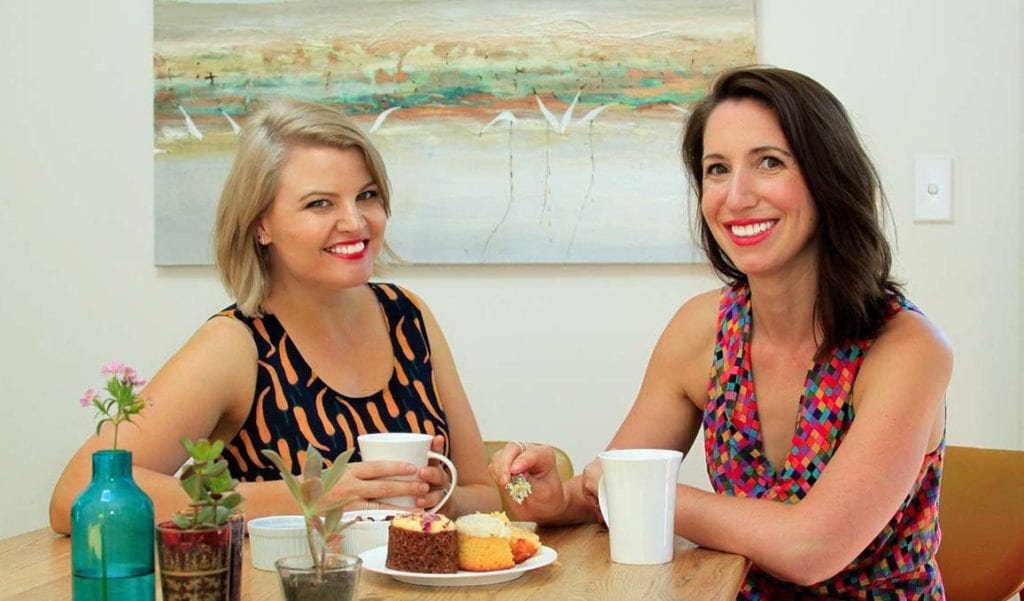Getting your financials, contracts and legal agreements in order is, of course, critical, but there are few googleable resources available to help you with arguably the most important part of any capital raise: the mental and emotional preparation.
After recently securing our first round of funding from eight experienced investors, we learnt there are five key things you can do to mentally prepare for the exciting but brutal process that is raising capital.
Know your worth
Before a trip to New York with a business accelerator back in May 2018, we hadn’t considered raising capital. Of course, we were aware of the maddening limitations of bootstrapping a product-based business: the huge upfront cost of production, the paradoxically high price of customer acquisition when you’re at your smallest and the long-term opportunities we were missing out on for the sake of short-term cashflow.
However, as a non-tech business run by a couple of mums, we didn’t quite know where we fit and this left us feeling uncertain. We weren’t convinced that a product-based business aimed at mums was what most investors were looking for in 2019.
However, a few meetings with VCs in the Big Apple and then back home in Sydney showed us businesses like ours had a role to play in diversifying the portfolios of a certain investor class.
Counter-intuitively, we honed in on fintech investors who we knew were used to seeing hockey stick growth curves from young guys years away from ever making a cent and wowed them with our consistent results, proven product-market fit, early profitability and the touch and feel nature of a physical product.
This enabled us to build a very clear profile of the sort of investor this deal would appeal to and be very specific about our asks to our networks.
The clarity in the profile gave us the confidence to go out and book our initial coffees.
Then came the valuation. We were lucky we had a supportive, experienced advisory board to guide us through this process because, as women often do, we kept attempting to undervalue the business, before any investors had even seen our deck.
It took repeated, somewhat bemused calls and meetings with our advisory board before we were convinced our valuation represented good value.
Then, once the decision was made, we had to work hard at believing it before we could ever convince an investor to.
We created a Word document with a series of objections and practised them before any pitch. By the time we got in front of investors, we were confident we can handle anything they threw at us and we were more than prepared to walk away from anyone who wasn’t excited to invest.
Get comfortable with failure
This tip is in every business book you’ve ever read. We are told over and over that you need to fail your way to success.
But what does that actually mean? And how do you apply it in a tangible sense when raising capital?
We gave ourselves a number.
We figured that for every investor we met who was a good fit, we’d have to meet 19 who were not. We knew that in seed rounds the individual investment amounts can be small, so we knew we’d have to get several investors over the line. So we figured we’d need to have 100 coffees and two dozen pitches before we were in a position to close the round.
It set us up mentally for a gruelling few months, and it also meant we didn’t take every no personally.
We knew it was a numbers game so we just kept scheduling coffees, giving pitches and building our networks.
Thankfully, we managed to secure the round in less time than we’d expected, but we still had to drink a lot of coffee!
Tap your networks
We started talking to our networks about our plans months in advance of starting our capital raise and we quickly realised there were significant mental benefits in doing so. Not only were they able to provide a tonne of helpful advice that helped us feel more prepared, but they were excellent test subjects too.
It helped us to get comfortable with our figures, valuation and key pitch messages in a much lower-stakes environment than a traditional pitch. And it helps you to slip into ‘pitch mode’ more easily when the time comes.
Importantly, we learnt that if you say ‘I’m raising $500k’ enough times and you start to believe it.
Lastly, we learned the truth in the adage ‘ask for advice, get money, ask for money, get advice.’
Create an alter ego
Before we started the process, I read The Alter Ego Effect by Todd Herman by chance.
I had previously had a picture in my head of what an entrepreneur looked like and they didn’t look like me. Todd claims to offer the ‘antidote to imposter syndrome’ via the ‘power of secret identities’.
Much like Superman’s Clark Kent, the premise is that sometimes we need an alternate identity to help us perform our best in a particular set of circumstances.
Herman’s process had helped athlete’s win gold medals and Super Bowls and executives perform under pressure. Feeling a bit silly, I followed the process and worked up an alter ego, with a name, a back-story, a motivation, a voice, a style of dress and a totem.
Like Clark Kent’s glasses, when I slipped my totem on, I made the commitment to embody the alter ego. It was the little boost I needed to bring my A game to every pitch.
Build a pre-pitch mental prep process
Much like some people do Wonder Woman poses in front of the mirror, my co-founder Lorraine had a short ritual she went through before each big meeting or pitch.
She found the times when our chances of investment were highest the most nerve-wracking, so she went through a little mental exercise to turn her fears around.
She’d name, then logically examine her fear. She asked herself ‘why am I nervous about this and is this genuinely something to be scared of or am I letting emotion take over?’
Then she’d give herself a pep talk and remind herself of how far we’d come, what we’d achieved and what we were capable of. It helped her bring her most-confident self to each pitch.
We’d also have a quick 20 minute run through before each and every pitch. Many puzzled café owners in Sydney, Melbourne and New York have watched us pitch to an invisible audience!
Some other things we did was clear our diaries on pitch days and outsourced or delayed any admin during the pitch process in order to facilitate single-minded focus. We also did what we could to reduce decision fatigue on pitch days by wearing the same outfit to every pitch.
By following these simple steps, we stayed energised and confident until the very end and walked away from our pitch process mentally stronger than we did when we began.
This article first appeared in SmartCompany


